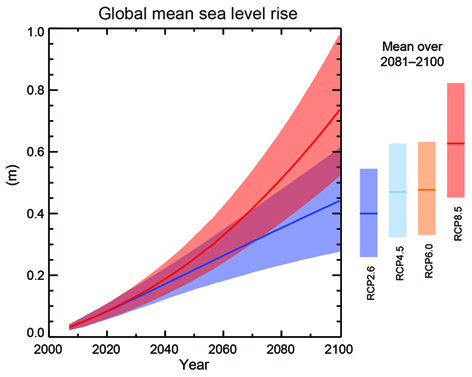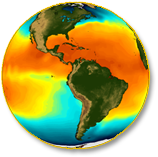Projections of Future Changes in Climate  Sea Level
Sea Level
Global mean sea level will continue to rise during the 21st century due to increased ocean warming and increased loss of mass from glaciers and ice sheets. Global mean sea level rise for 2081-to 2100 relative to 1986-2005 will likely be in the ranges of 0.26 to 0.55 m for RCP2.6, 0.32 to 0.63 m for RCP4.5, 0.33 to 0.63 m for RCP6.0, and 0.45 to 0.82 m for RCP8.5. These ranges are derived from CMIP5 climate projections in combination with process-based models and literature assessment of glacier and ice sheet contributions.
In RCP projections, thermal expansion accounts for 30 to 55% of 21st century global mean sea level rise, and glaciers for 15 to 35%. The increase in surface melting of the Greenland ice sheet will exceed the increase in snowfall, leading to a positive contribution from changes in surface mass balance to future sea level. While surface melting will remain small, an increase in snowfall on the Antarctic ice sheet is expected, resulting in a negative contribution to future sea level from changes in surface mass balance.
Note that both mid-range scenarios, RCP4.5 and RCP6.0 project similar sea level rise by 2100 between 0,32 to 0.63 meters, or 1.5 feet to 2.1 feet. Longer term, sea levels will continue to rise beyond 2100 for many centuries, even after emissions have been reduced or eliminated, due to continued thermal expansion.

